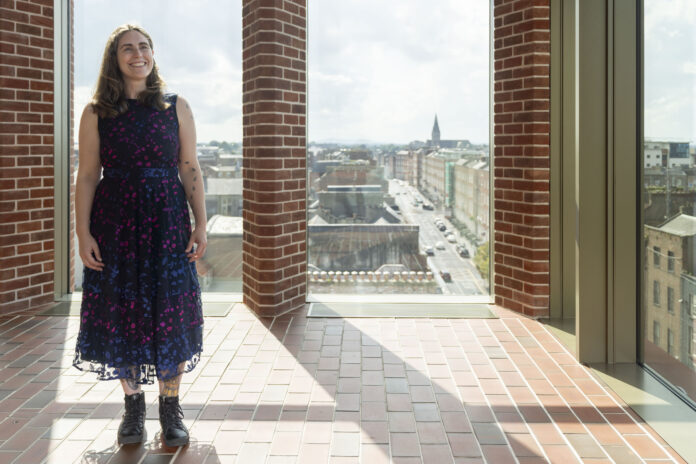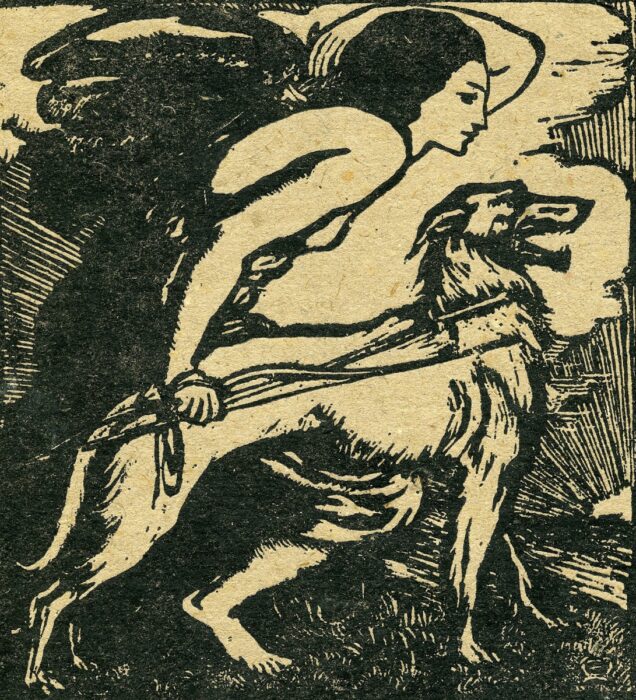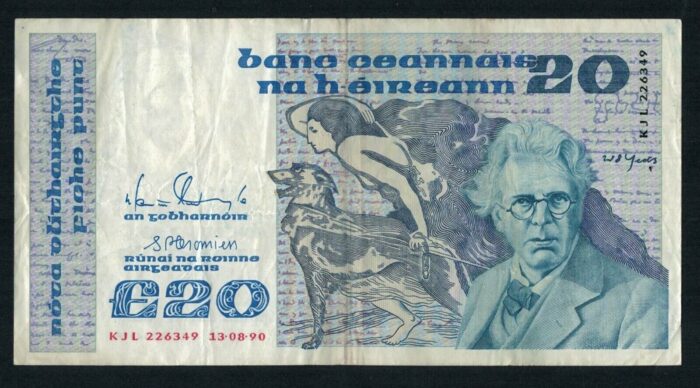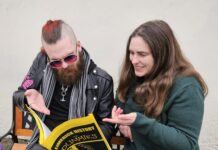
THE iconic Abbey Theatre, a cornerstone of Irish culture, first opened its doors to the public in 1904. Emerging from the Irish Literary Theatre, founded by Lady Gregory, Edward Martyn, and William Butler Yeats, it became a symbol of Ireland’s burgeoning artistic and literary revival.
Central to its identity was its logo, a striking depiction of Queen Maeve and a wolfhound, designed by the talented Limerick-born artist Elinor Mary Monsell — a logo that remains in use and well recognised still today.
Elinor Mary Monsell was born on September 1, 1878, at Craig Cottage, North Circular Road, in Limerick City.
Her family came from wealth and status. Her mother, Elinor O’Brien, was the granddaughter of Sir Edward O’Brien, 4th Baronet of Dromoland, County Clare. While her father, William Monsell, was the son of poet Rev John Samuel Monsell.
From a young age, Elinor showed artistic promise. In 1893, her illustrations received recognition in The Children’s Salon section of The Gentlewoman magazine, signalling the beginning of a distinguished artistic career.
At 17, Monsell moved to London, where she collaborated with her brother, John Robert Monsell, as an illustrator. He would later give her away at her wedding. In 1896, she secured a scholarship to the prestigious Slade School of Art, further honing her skills.
Despite residing in England, she was still very involved with cultural activities in Ireland. She was part of the Irish Literary Revival, and a close friend of Virginia Wolfe, Lady Gregory, and William Butler Yeats. She painted a portrait of her relation, Aubrey Thomas de Vere (1814-1902), the poet from Curraghchase, County Limerick.

In high company
Monsell’s artistic repertoire was vast and varied. She designed the logo for publishing house Dun Emer Press, founded in 1902 by Evelyn Gleeson, Elizabeth Yeats, and Elizabeth’s brother William Butler Yeats.
Elinor also contributed woodcut illustrations to The Venture: An Annual of Art and Literature (1903), edited by Laurence Housman and W Somerset Maugham. Her works were showcased in exhibitions alongside prominent artists like Jack B Yeats, another sibling of William Butler Yeats.
Monsell also provided wood engravings for Charles Ricketts’ Vale Press.
The author Stephen Gwynn used one of her designs as the cover of his publication The Fair Hills of Ireland (1906). The following year, she illustrated the entirety of the summer edition of the quarterly magazine The Shanachie. This publication included articles by J M Synge, author of The Playboy of the Western World, on life in West Kerry, and Jack B Yeats on the rationale of art.
As she mixed in literary circles in London, she met and soon married the children’s book writer Bernard Darwin. Their marriage in July 1906 was noted in The Gentlewoman, who made comment on Monsell being gifted “Limerick Lace” from her aunt Florence Vere O’Brien. O’Brien was attempting to revive the lace industry in Limerick.
Her new husband, Bernard Darwin, was grandson of the naturalist Charles Darwin and was descended from the acclaimed ceramic designer Josiah Wedgwood. Monsell was unlike many women of her time, whose employment outside the home stopped once they married. Instead she provided illustrations for many of her husband’s books, including the Tootleoo series and Nursery Rhymes for Certain Times.

‘Entirely unsentimental’
In 1921, her exhibition, Pictures of Children, was held at the Macrae Gallery, on Regent Street in London. Art critic Charles Marriott noted in Country Life that Monsell “is entirely unsentimental… if you give a name to the character most present in her portraits of children, you would say solemnity.”
“Her imagination is inspired by the facts, and not by some poetical evasion of them,” he continued.
In 1924, the Royal Hibernian Academy in the Metropolitan School of Art, Dublin, exhibited her work Nuns in Consultation.
Monsell’s later years were not without controversy. In the 1930s, she became a member of the London-based Eugenics Education Society (now known as the Galton Institute), founded by Sybil Gotto (1885-1955) in 1907. Many of the Darwin family were also members of the society, with two becoming presidents.
Monsell and her husband relocated to Kent before 1939, where she lived for the rest of her life and continued her passion for the arts.
Her daughter, Ursula Mommens (née Darwin, 1908-2010) became a renowned potter. In the 1950s, Elinor encouraged her son-in-law, Norman Mommens (1922-2000), to take up sculpting in stone. She passed away on May 2, 1954, in Downs, Kent, which had also been home to her famous grandfather-in-law.
Her work for the Abbey Theatre gained renewed recognition in 1980 when her illustration of Queen Maeve appeared in the background of Ireland’s £20 note featuring William Butler Yeats.









